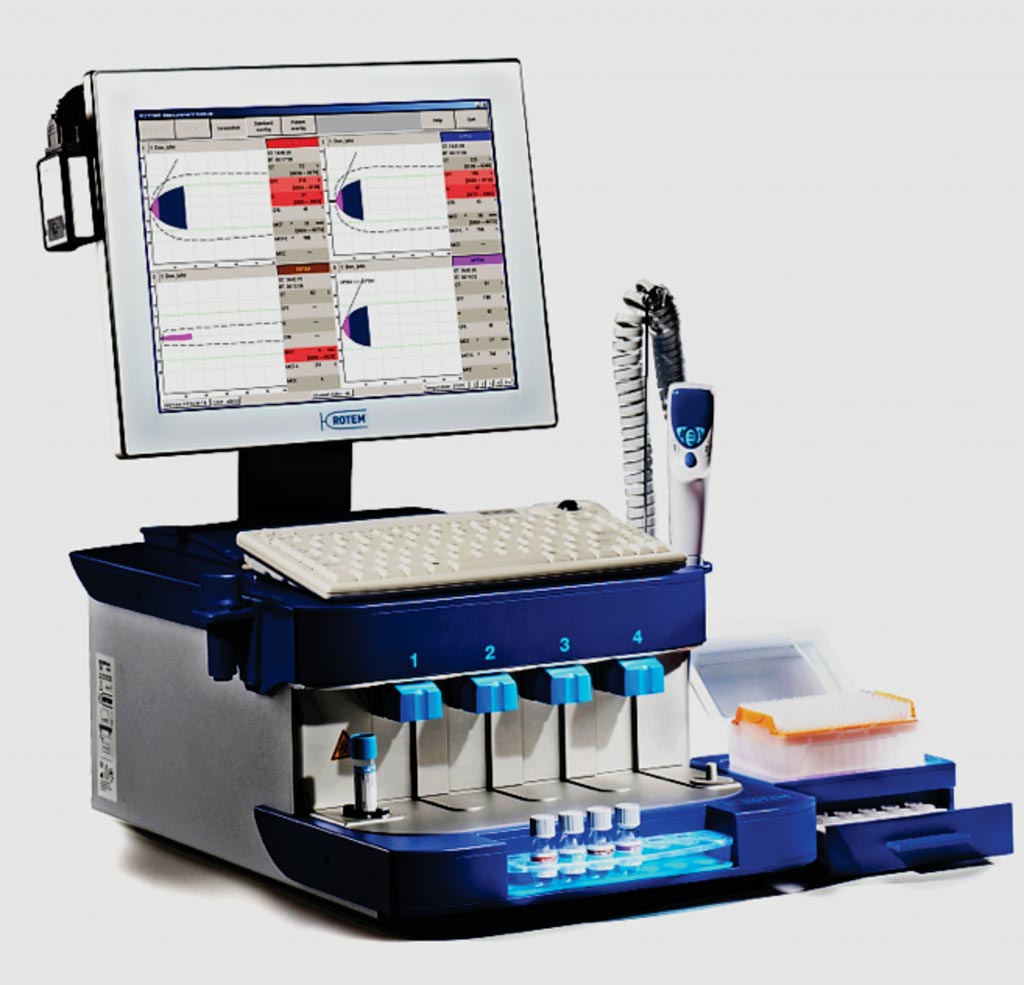Thromboelastometry Analysis Assessed for Thrombocytopenic Dengue Patients
By LabMedica International staff writers
Posted on 01 Feb 2017
Dengue virus infection (DVI) is a prevalent and potentially fatal viral disease associated with coagulopathy. Dengue hemorrhagic fever (DHF) represents a severe clinical presentation of DVI and is characterized by the presence of varying degrees of hemostatic disorders.Posted on 01 Feb 2017
Rotational thromboelastometry is a point of care test that promptly provides within 5 to 30 minutes information about the dynamics of clot formation, stabilization and dissolution, reflecting the in vivo hemostasis at the bedside.

Image: The rotational thromboelastometry (ROTEM) delta hemostasis analyzer measures kinetic changes of the clot elasticity of whole blood samples (Photo courtesy of ROTEM).
Physicians at the Hospital Israelita Albert Einstein conducted a cross-sectional study during a DVI outbreak in São Paulo, Brazil, between April 6 and May 5, 2015. Patients with at least 24 hours of fever (axillary temperature greater than 37.8 °C), in addition to a positive dengue virus (DV) specific immunoglobulin IgM/IgG or non-structural protein-1 (NS1) antigen rapid test and platelet count less than 100 × 109/L were consecutively included in this study.
Rotational Thromboelastometry and the conventional coagulation tests prothrombin time (PT), international normalized ratio (INR), activated partial thromboplastin time (aPTT), thrombin time (TT), platelet count and fibrinogen levels were performed in 53 patients with DVI and thrombocytopenia. Measurement of coagulation in ROTEM was performed after the vertical immersion of a plastic pin into the blood sample. The pin rotates slowly backwards and forwards through an angle of 4.75°. By generation of the first fibrin filaments between the pin and the wall of the test cup, the rotational range of the pin is reduced. The increased restriction of the pin’s movement is transferred to a graphical display, a plot that shows changes in the viscoelastic properties of the clot over time.
The team found that despite a median interquartile range (IQR) platelet count of 77 (63–88) × 109/L in DVI patients, conventional coagulation tests and plasma fibrinogen levels were within the normal range. Subjects demonstrated hypercoagulability in 71.7% (38/53) in intrinsically activated thromboelastometry test (INTEM) and 54.7% (29/53) in extrinsically activated thromboelastometry test (EXTEM) in DVI patients. Fibrin-based thromboelastometry test (FIBTEM) analyses detected only 5.7% (3/53) with hypocoagulability among this population. The median (IQR) clotting time (CT), clot formation time (CFT) and maximum clot firmness (MCF) on INTEM were, respectively, 177 (160–207) seconds, 144 (108–178) seconds and 48 (42–52) mm. On EXTEM, median (IQR) CT, CFT and MCF were, respectively, 69 (65–78) seconds, 148 (126–198) seconds and 49 (44–55) mm.
The authors concluded that thromboelastometry impairment is highly prevalent in DVI patients with thrombocytopenia, particularly in INTEM and EXTEM analyses, while standard coagulation tests are normal in this setting, but clinical implications remain to be established. The study was published on January 19, 2017, in the journal BMC Infectious Diseases.




 assay.jpg)









